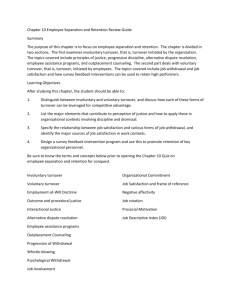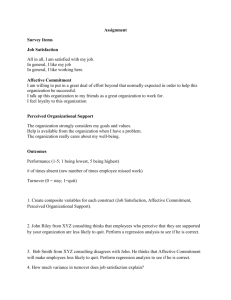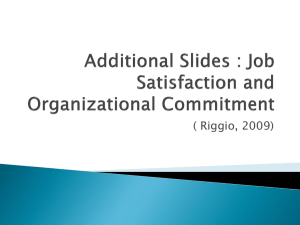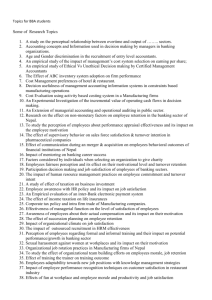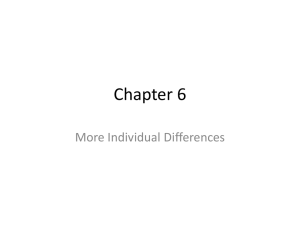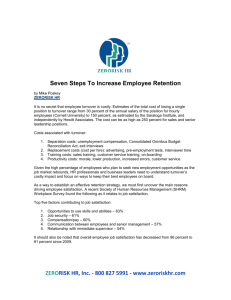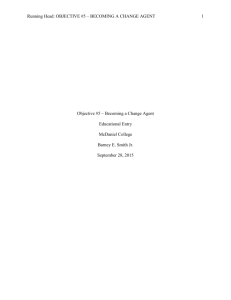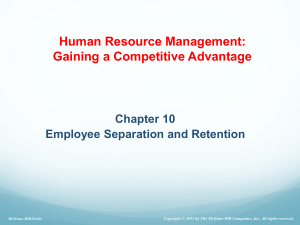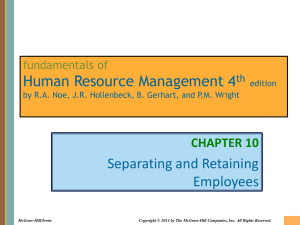Feb 15 - Nora P. Reilly, Ph.D.
advertisement
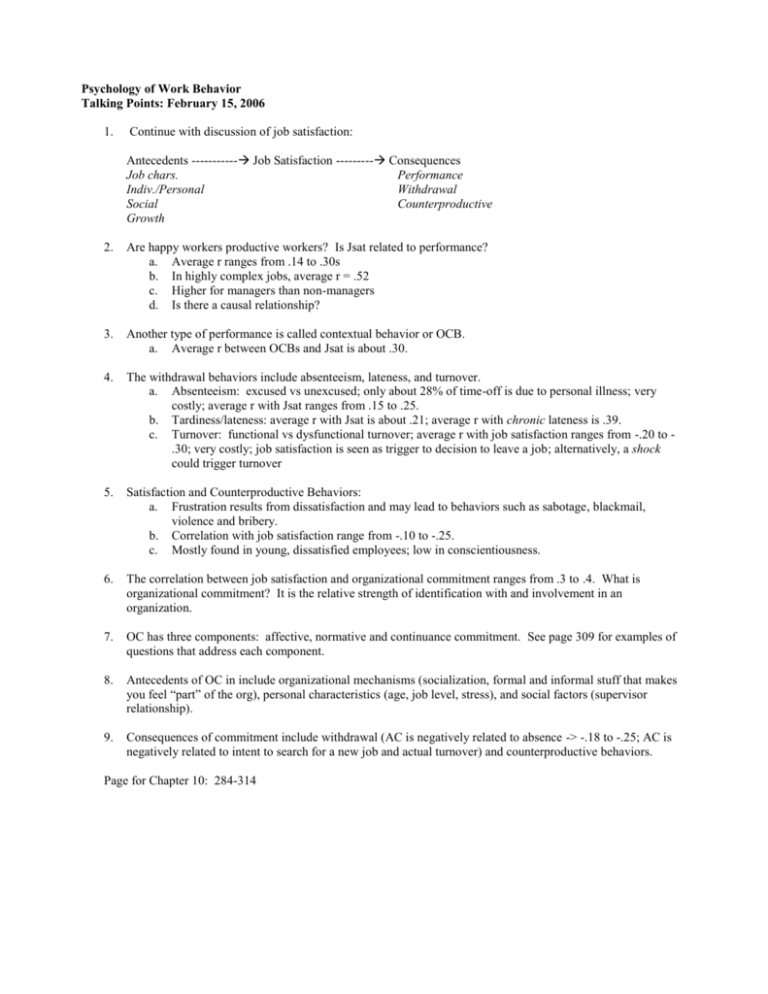
Psychology of Work Behavior Talking Points: February 15, 2006 1. Continue with discussion of job satisfaction: Antecedents ----------- Job Satisfaction --------- Consequences Job chars. Performance Indiv./Personal Withdrawal Social Counterproductive Growth 2. Are happy workers productive workers? Is Jsat related to performance? a. Average r ranges from .14 to .30s b. In highly complex jobs, average r = .52 c. Higher for managers than non-managers d. Is there a causal relationship? 3. Another type of performance is called contextual behavior or OCB. a. Average r between OCBs and Jsat is about .30. 4. The withdrawal behaviors include absenteeism, lateness, and turnover. a. Absenteeism: excused vs unexcused; only about 28% of time-off is due to personal illness; very costly; average r with Jsat ranges from .15 to .25. b. Tardiness/lateness: average r with Jsat is about .21; average r with chronic lateness is .39. c. Turnover: functional vs dysfunctional turnover; average r with job satisfaction ranges from -.20 to .30; very costly; job satisfaction is seen as trigger to decision to leave a job; alternatively, a shock could trigger turnover 5. Satisfaction and Counterproductive Behaviors: a. Frustration results from dissatisfaction and may lead to behaviors such as sabotage, blackmail, violence and bribery. b. Correlation with job satisfaction range from -.10 to -.25. c. Mostly found in young, dissatisfied employees; low in conscientiousness. 6. The correlation between job satisfaction and organizational commitment ranges from .3 to .4. What is organizational commitment? It is the relative strength of identification with and involvement in an organization. 7. OC has three components: affective, normative and continuance commitment. See page 309 for examples of questions that address each component. 8. Antecedents of OC in include organizational mechanisms (socialization, formal and informal stuff that makes you feel “part” of the org), personal characteristics (age, job level, stress), and social factors (supervisor relationship). 9. Consequences of commitment include withdrawal (AC is negatively related to absence -> -.18 to -.25; AC is negatively related to intent to search for a new job and actual turnover) and counterproductive behaviors. Page for Chapter 10: 284-314
